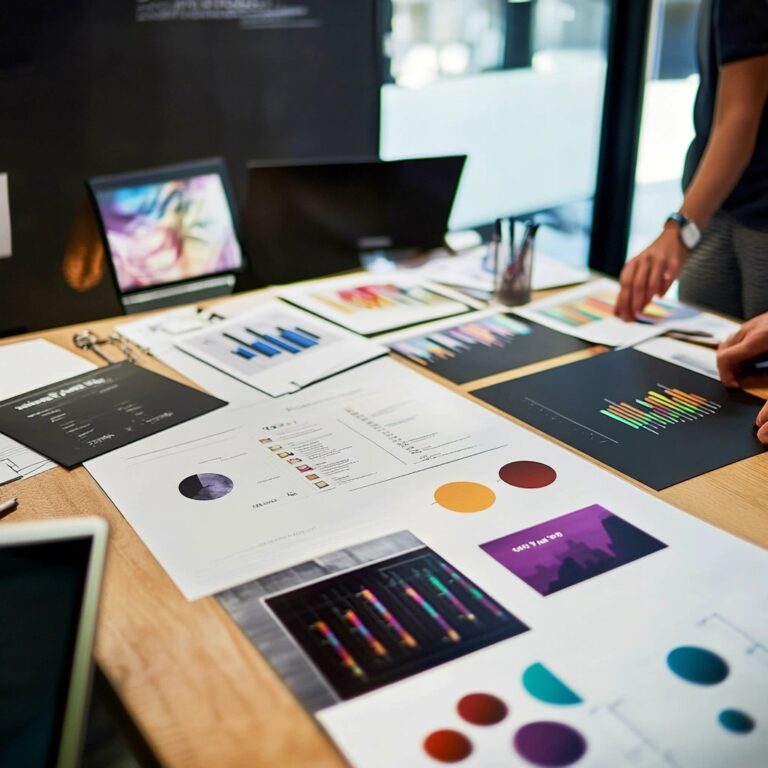The Effects of Instagram Removing Likes

- 1. Why Would Instagram Remove Like Visibility?
- 2. A Concern for Influencers
- 3. The Reality: It’s A Change, Not An Ending
- 4. Brand & Influencer, A Better Relationship
- 5. Content > Influencer
- 6. The Rise of Micro-Influencers
- 7. Content Form Shift
- 8. The Change—It Was Already in Motion
- 9. Take A Breath Influencers, This Is Opportunity!
In June of this year, Instagram began testing its new “like-less” platform in seven countries (New Zealand, Japan, Italy, Ireland, Brazil, Canada, and Italy). What does that mean, “like-less?” And why did Instagram remove likes in the first place? It means that Instagram posts will no longer showcase the number of Instagram likes they garner.
In other words, the average viewer won’t be able to see-externally-how much attention a certain post received. This new update has posed a concern for those involved in an influencer agency or influencer marketing. If you are an Instagram user yourself, you may have already noticed these hidden likes on your feed. Luckily, our digital marketing agency has remained on top of this update and is here to help!
Why Would Instagram Remove Like Visibility?
Isn’t the entire platform of Instagram based on “liking” posts? While this feature has been an integral aspect of their core design, Instagram chief Adam Mosseri said:
We want people to worry a little bit less about how many likes they’re getting on Instagram and spend a bit more time connecting with the people they care about.
What he’s saying is that Instagram is trying to curb the social pressure and mental health concerns surrounding the unhealthy nature of validation, societal comparison, and depersonalization through social media.
A Concern for Influencers
While many people support Instagram’s new mission of hiding likes, the upgrade on the social media app poses a threat to the Instagram Influencer, seeing as it’s forever been their form of digital currency. If they receive more likes, they remain competitive. If they remain competitive, their business thrives.
Of course, it’s not that simple of a formula but, fundamentally, “likes” are one the biggest engagement metrics influencers and marketers lean on.
Being that this fundamental change is now causing somewhat of an outrage-with many believing it’s only the beginning of a platform-wide shift-people need to realize that the future isn’t that bleak for this social media platform.
The Reality: It’s A Change, Not An Ending
The truth is that Influencer Marketing is heavily dependent on Instagram metrics. Likes and comments are a direct correlation to user engagement, and high user engagement is the main goal for Influencers. Thus, Influencers are terrified that their brand(s) is going to suffer and they won’t be able to fulfill their contracts or deliver on their various types of campaigns.
Here’s why they’re wrong:
The Like Isn’t Vanishing!
It’s a massive change, yes, but the ability to “like” a post isn’t going to be disabled, it just doesn’t show the exact like count as it used to. A few reasons Influencers shouldn’t be worried:
- They Can Still Get Likes – Sure, not showing likes externally will likely reduce the number of likes given, but that doesn’t mean they’re disappearing. An Instagram user that engages with the content will still be able to honor them with the “double-tap.” Plus, accounts can still receive comments which is another way customers can interact with a post.
- Influencers Retain Control of the Metric in the Instagram App – Influencers aren’t in the dark when it comes to likes. They’ll still be able to see what posts were liked and how many were garnered. This means they’ll have full visibility on user engagement from their end. Point being: they’re not blind to their audience.
- A More Intimate Relationship with Partners – Marketers are now going to ask their influencers to share their metrics beforehand. This creates the foundation for a more authentic partnership. Social media influencers can showcase their strengths by providing “hidden” data, helping to optimize an influencer marketing strategy.
Related Article: How to Leverage Content With Influencer Marketing
Engagement Rate Doesn’t Lose Relevance!
The reality is that engagement isn’t going to decline because there is no external like count. And, being that Instagram is expected to lose 20% of their daily likes, this means the entire scale tips downward.
It’s still an even playing field.
Many believe that removing Instagram likes is going to pave the way for further engagement because the connections made will be more authentic. This shift opens a window for high-quality content driven by hard quantifiable data, which can actually make the user to influencer relationship more impactful. As long as influencers invest their focus towards quality content, their engagement scores with their target audience should continue to rise.
Sharyn Smith, CEO of Social Soup, says:
If you focus on the science of influence, and not on vanity metrics, the loss of public likes to the public has little impact. In fact, it will make influencer marketing a more powerful proposition in the future as we look at genuine influence rather than a like which becomes momentary habitual behavior.
Measuring Success In More Intelligent Ways
To piggyback on the last point, the habitual nature of liking muddies the relationship between like and engagement. In layman’s terms, just because someone liked a post doesn’t mean they’re engaged or even care that much.
- New Metrics – Now, metric measuring options like UTM codes and Accounts Reached (with a story) are going to be some of the primary drivers of an influencer campaign. It’s not just about superficial likes or how many people are out there tapping on a given post, it’s about how successful an influencer is at driving traffic to a business.
Brand & Influencer, A Better Relationship
Additionally, now that metrics are going to be more pointed, the relationship between the marketer and influencer might undergo a monumental shift.
A shift for the better.
Kady Hobbins, the creator of Kaden Ave Communications, says:
We try to encourage our clients not to put too much stock into vanity metrics like likes. We try to encourage them and tell them it’s not about the numbers. It’s about having your actual customers following you and giving them a good customer journey and experience. And then maybe converting them, so whether that’s getting them to book an appointment if it’s a hair salon, or click through to the link in your bio to purchase a product. We try to have those as goals and outcomes that we report to them, rather than just how many people are liking their photos.
The point is that brands are going to be further aligned with influencers that represent their core message through a brand ambassador program. And, as millennials grow weary of the influencer marketing landscape, they often distrust brands that stand out as having paid to place their ads—especially when it’s with a personality that isn’t aligned with their core values. This marketing strategy provides influencers the opportunity to help a company help drive sales and improve brand recognition. Influencer brand ambassadors become the face of said brand, so ambassador credibility becomes crucial.
Content > Influencer
Another paradigm shift that will likely occur due to Instagram removing likes is that content will become even more important. Even before Instagram began changing its ruleset, marketers were growing more aware that great content often trumps an “amplified” account. This is only going to put more emphasis on quality content, hopefully creating a more authentic marketing terrain on the app.
The Rise of Micro-Influencers
Being that 93% of influencer campaigns rely on Instagram, marketers are unlikely to pivot away from the social media platform. If this article has taught you anything, it’s that with change comes opportunity—in other words, new strategies.
- Focus On Communities – Influencers will now have to dig a little deeper into their audience, ensuring that they know which communities are in their orbit. Why? Because marketers are going to start prioritizing marksmanship (on their end) rather than big influencer accounts. This creates an opportunity for Influencers to have even more value.
- Smaller Influencers – It’s also likely that marketers are going to start turning to nano or micro-influencers as a way of accurate targeting. Their value proposition becomes more interesting when vanity metrics fall by the wayside, seeing as deeper engagement is now what’s coveted.
Smaller Influencers tend to have niche-followings that are extremely engaged with their personalities. If marketers can align themselves with several micro-influencers that have a ubiquitous niche, they could easily drive better engagement than utilizing bigger Influencers.
Content Form Shift
For a good while, marketers have been witnessing the resurgence of the short-form video. With TikTok’s unbelievable success and YouTube adding its “reels” feature, we’re going back to the “snapshot” form of content.
But what does this mean for Influencers?
It means that with this new era of Instagram, it might be time to rethink their content structure. It’s not only going to force Influencers to pay more attention to their own metrics (not to mention ensuring the authenticity of their messaging) but also to adapt to how people want to digest content.
These types of shifts create opportunities for new trends. An example of a trend making its way to the mainstream in response to social media’s new landscape is the Amazon Influencer Program. This is yet another exciting opportunity and platform for social media influencers to increase revenue by collaborating with Amazon brands.
The Change—It Was Already in Motion
The reality is that vanity metrics have been exposed in recent years. Marketers realize that the amount of “likes” an Instagram post gets doesn’t necessarily translate to how well an Influencer can drive traffic to a business. Many strategies call for deeper performance metrics, those that rely on evaluating engagement well past how many people double-tap their screens.
While Adam Mosseri says “we don’t want Instagram to feel like a competition,” he’s also saying that Instagram has forced a change that was inevitable. The paradigm has shifted but that doesn’t mean it’s constricting.
Take A Breath Influencers, This Is Opportunity!
The removal of likes will inevitably force social media influencers to focus on their content quality and follower engagement instead of their popularity across social media. By and large, if they take the proper strides towards optimizing their business, they can become even more valuable.
The real value drivers have remained static. Followers are still going to engage when they’re enticed. These primary facets of the influencer relationship aren’t changing because followers can’t see how many likes each post has.
They’re still there. They’re still tangible.
Influencers just need to pay a bit more attention, focus on their content, and adapt to the new—and every much equal—playing field.
Sources:
BBC News. Instagram hides likes count in international test ‘to remove pressure’
https://www.bbc.com/news/world-49026935
BANDT. No Likes, No Worries! Influencers Welcome Changes to Instagram
https://www.bandt.com.au/no-likes-no-worries-influencers-welcome-changes-instagram/
Forbes. Is TikTok The Next Big Thing In Influencer Marketing?
Mobile Marketer. Study: 93% of influencer campaigns use Instagram.
https://www.mobilemarketer.com/news/study-93-of-influencer-campaigns-use-instagram/542985/
Good Morning America. Why this popular influencer likes removing “likes” from Instagram
Our Editorial Standards
Reviewed for Accuracy
Every piece is fact-checked for precision.
Up-to-Date Research
We reflect the latest trends and insights.
Credible References
Backed by trusted industry sources.
Actionable & Insight-Driven
Strategic takeaways for real results.






